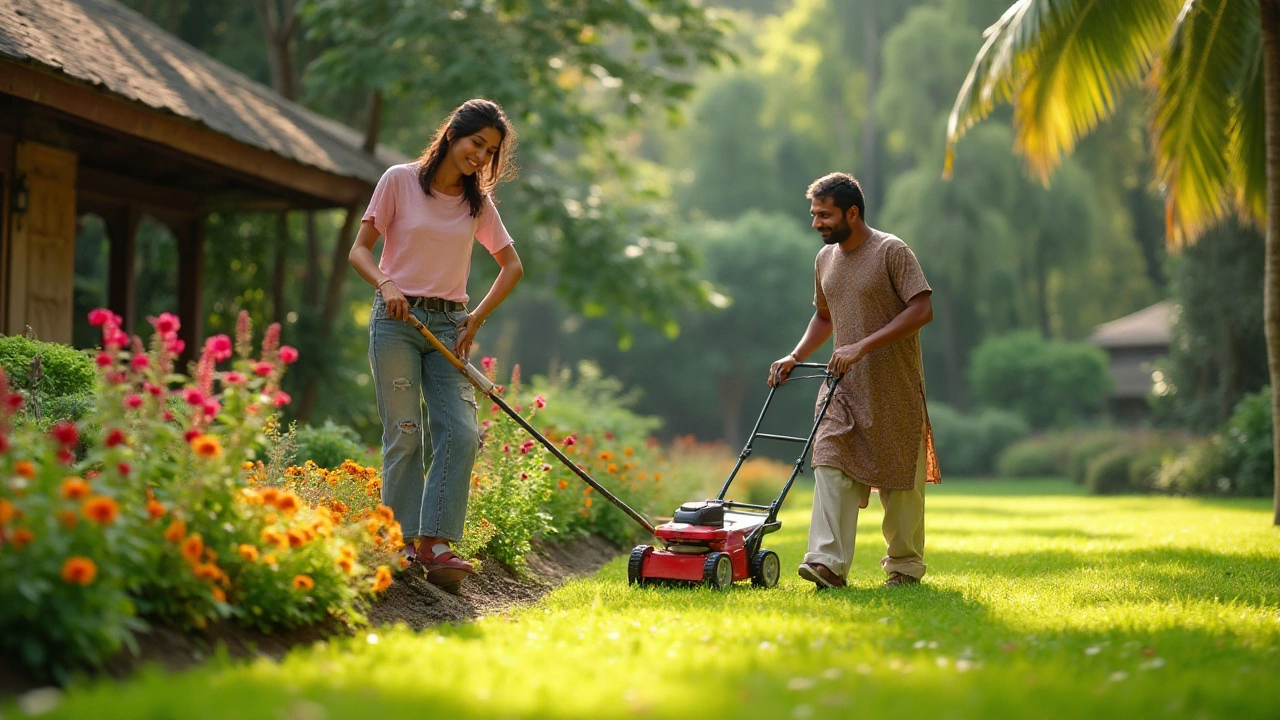Garden Maintenance: Essential Tips for Healthy Lawns, Plants, and Landscapes
When you think of garden maintenance, the regular tasks needed to keep outdoor spaces healthy, attractive, and functional. Also known as landscaping upkeep, it’s not just about pulling weeds—it’s about understanding how soil, water, sunlight, and plants interact over time. Most people start with a beautiful yard and end up overwhelmed because they treat it like a one-time project. But a garden isn’t a photo op. It’s a living system that needs consistent attention, especially in changing seasons.
Lawn care, the practice of maintaining grass for health, density, and appearance, is often the biggest headache. Too much water? You get fungus. Too little? The grass turns brown and dies back. Mowing too short weakens roots. The real secret? Know your grass type—whether it’s fescue, Bermuda, or Kentucky bluegrass—and match your schedule to it. Most lawns need about an inch of water a week, delivered in one or two deep soakings, not daily sprinkles. And never cut more than a third of the blade at once. That’s it. No magic products needed.
Plant care, the ongoing actions to support shrubs, flowers, and trees through pruning, feeding, and pest control, gets ignored until something dies. But healthy plants start with good soil. Test it. Most home gardens need organic matter added yearly—compost, leaf mold, or aged manure. Pruning isn’t just about looks; it’s about airflow. Crowded branches trap moisture and invite disease. Remove dead wood in early spring. Cut back overgrown shrubs after flowering. And don’t over-fertilize. A little balanced feed in spring and fall is usually enough. Your plants will thank you.
And then there’s landscaping, the design and arrangement of outdoor elements like paths, beds, hardscapes, and drainage. A well-planned layout reduces maintenance. Gravel paths beat grass in high-traffic zones. Raised beds make weeding easier. Sloped areas need ground cover to stop erosion. If your garden feels like a chore, look at the structure. Maybe your mulch is too thin. Maybe your irrigation heads are clogged. Maybe your perennials are planted too close. Fix the setup, and the work gets lighter.
What you’ll find in the posts below aren’t fancy tips from Instagram garden influencers. These are real fixes from people who’ve dealt with cracked patios, moldy mulch, dying hydrangeas, and lawns that won’t grow back. You’ll see what actually works after the first season, not just the first week. Whether you’re dealing with a tiny urban plot or a half-acre backyard, the same rules apply: observe, adjust, repeat. No expensive tools. No complicated apps. Just smart, simple habits that keep your garden alive without burning you out.
Essential Yard Work Tasks for a Well-Maintained Landscape
Yard work includes a variety of tasks essential for maintaining a beautiful and functional outdoor space. These tasks range from basic lawn care like mowing and edging to more involved jobs such as pruning, planting, and mulching. Effective yard work not only enhances the aesthetic appeal of your yard but also promotes a healthy and thriving environment. Whether you hire a professional or tackle it yourself, understanding what yard work entails can make all the difference in creating your ideal landscape.
Learn more...